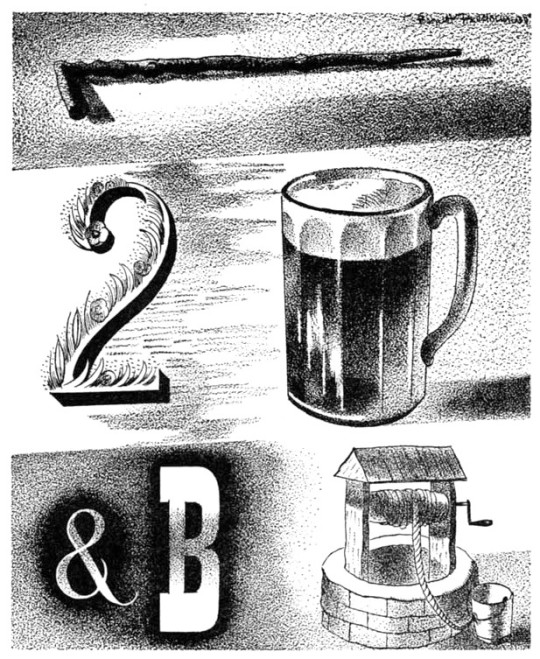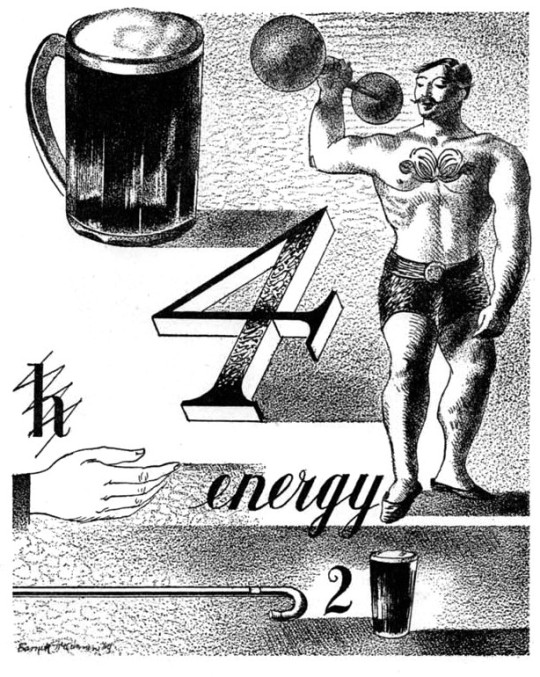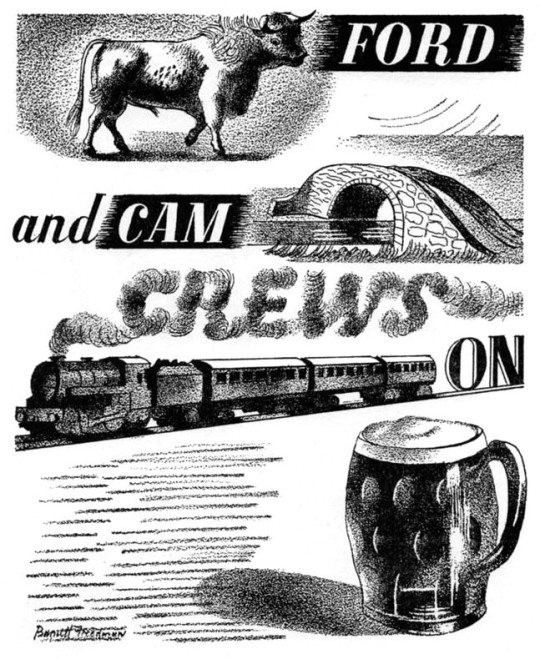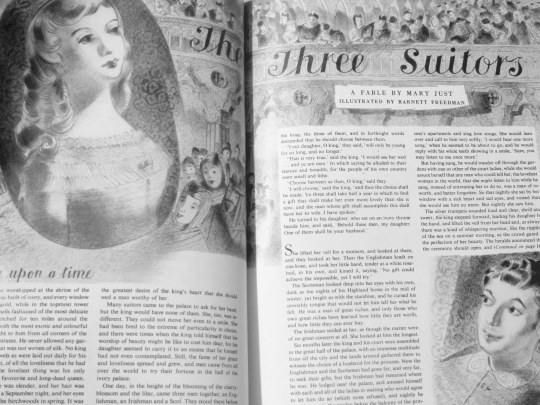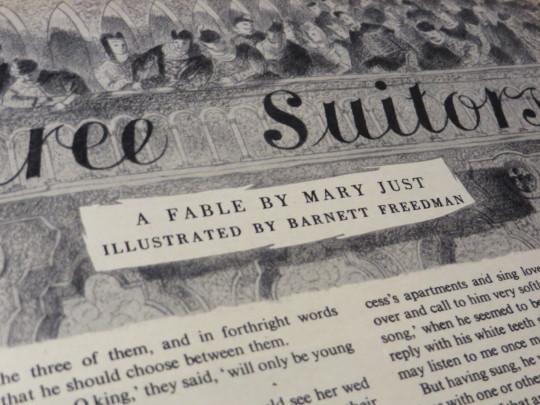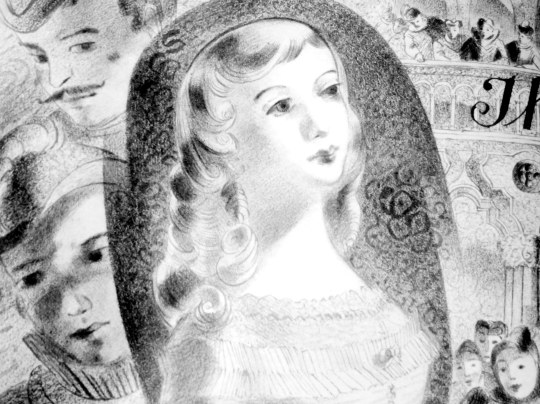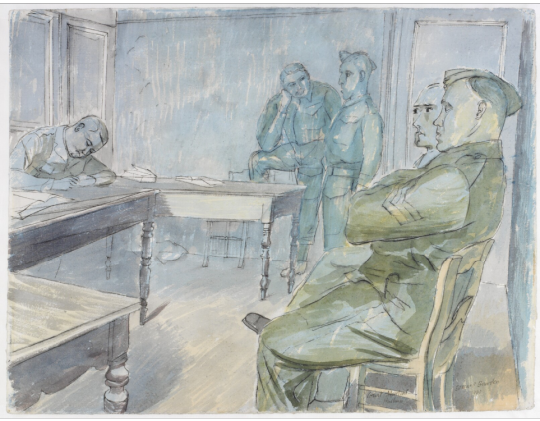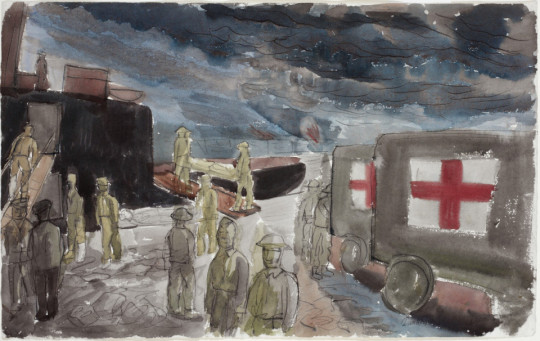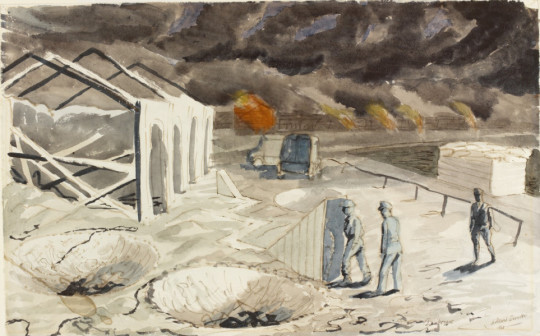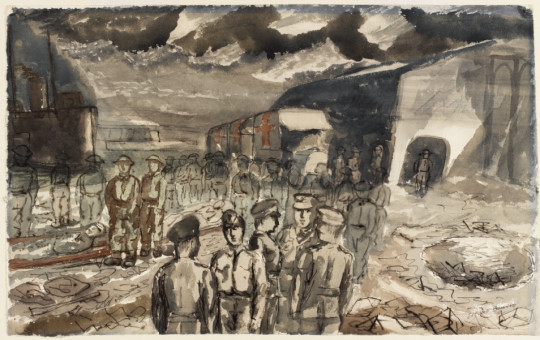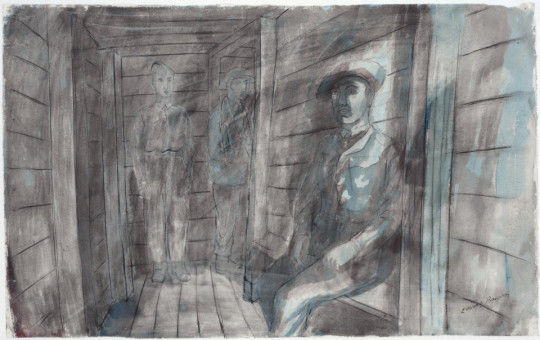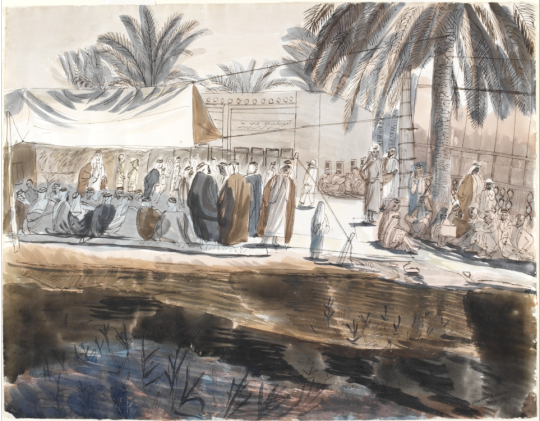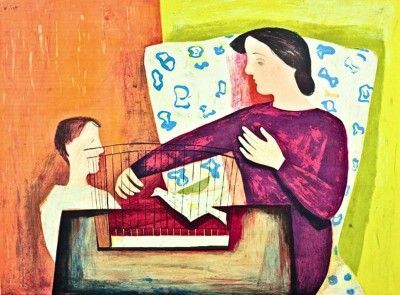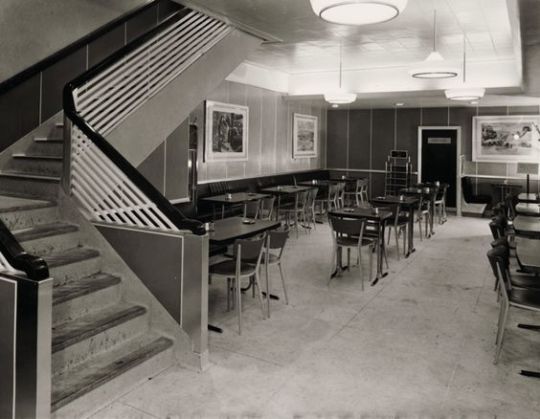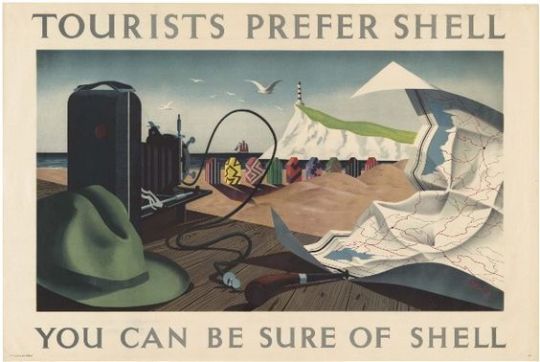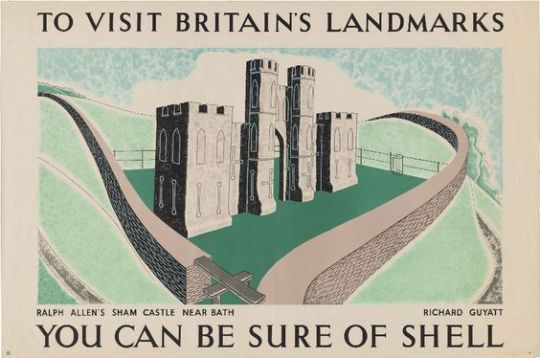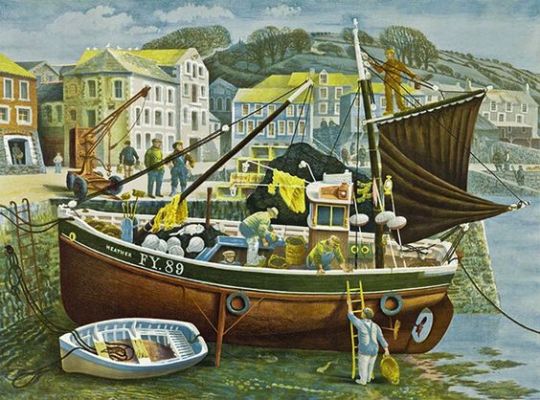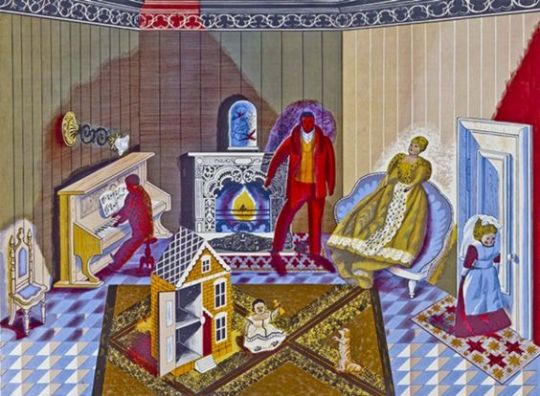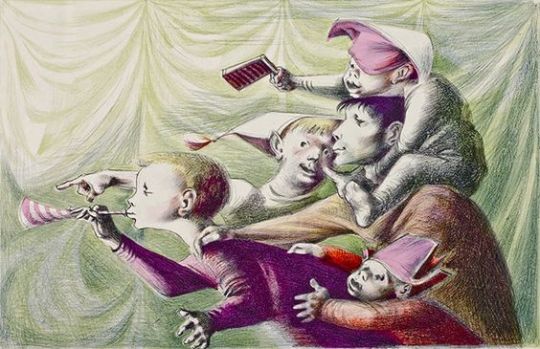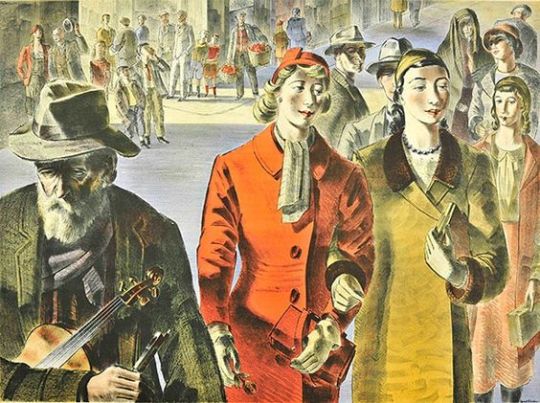Here is a essay on Sicilian Carts. It is from a short lived art journal called Arts and Crafts ‘A monthly review’ edited by Herbert Furst, and then Wilfred Lewis Hanchant. It ran from between 1927-1929.
What is interesting is the essay is by Claudia Guercio, who later became Claudia Freedman. Claudia was born in Formby, Liverpool and studied at the local art school before going to the Royal College of Art. There she met and married Barnett Freedman.
It can be a bit rambling but I think it is worth a read and Claudia also mentions her beloved Sicilian Puppets.
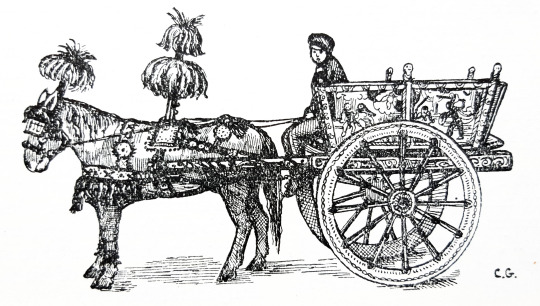
Sicilian Carts by Claudia Guercio
One of the most outstanding features of Sicilian life, in the eyes of any foreigner visiting Sicily for the first time, are the carts used by the peasants of that country. As the carts used in Palermo, the capital of the island, are supposed to be without parallel it is of them we shall speak the writer happens to have lived many years in Palermo and is well acquainted with the carts to be seen there and in the surrounding countryside. They are just the ordinary working carts, used by the proprietors of orange and lemonade orchards in the country to carry their fruit to market in the towns, used by the charcoal sellers and the peddlers of fruit and vegetables, who go their rounds in the morning through alleys and by-streets. These beautifully painted carts are used for even humbler purposes, great loads of seaweed are carried away in them from the sea-shores and loads of stones from the quarries. They are mostly drawn by mules and donkeys, as those are found to be the hardiest animals for that work, though horses of the Sicilian breed are also used.
One of those most remarkable things about these carts is that their shape is of the most primitive and utilitarian kind, and yet, they are enriched in all parts with the most exquisite carvings and imaginative paintings. The pattern is always the same though the subjects of the paintings and the details vary.: two panels of painting on each side and the axel is elaborated with wind wood carvings and iron work, all painted in bright colours, and sometimes another strip of similar work hands, like a curtain, from the back of the cart. The four panels of figure painting – two on each side of the art – are illustrations of all kinds of historic and legendary subjects, and they are placed, like pictures in a framework of carved and painted wood, which form the two sides of the cart.
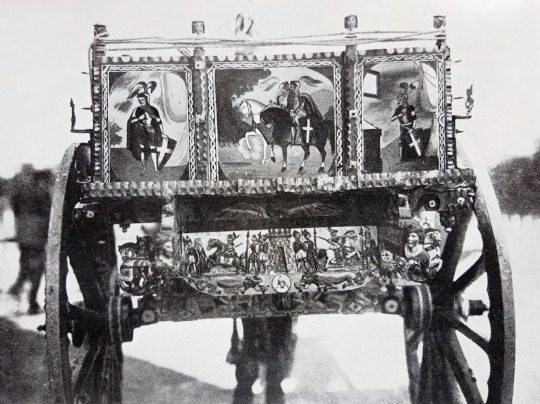
Among the legendary subjects thew favourite ones are: the episode of Rinaldo and Armida, from Tasso’s “Jerusalem Delivered”; Roland at Ronceveaux; Oliver’s Duel; Charlemagne and his Peers, and Angelica at Paris – (an episode from Ariosto’s “Orlando Furioso.”) There are also paintings on the carts whose inspiration comes from such far sources as Greek history and mythology; such as the burning of Troy, the Trojan Horse, and the Rape of Europa! Among the historic subjects the favourites are the Coronation of King Roger – episodes from the Norman Conquest of Sicily, the Retreat from Moscow and pictures of Napoleon III: all derived from more or less authentic sources.
Sometimes the paintings are of a religious kind; and there are also more familiar subjects such as attacks of brigands and family pictures. The subjects of these paintings are usually chosen by the owners of the cart. What must seem most wonderful to the foreigner is the surprising knowledge of such a variety of legends and historical anecdotes on the part of what are often quite illiterate people. But their two great sources of information are the Marionette theatres and the old Sicilian “contastorie”
In the Marionette theatres, for a few soldi, one can see enacted by puppets – on a diminutive stage – the whole epic of Charlemagne, to the accompaniment of a barrel organ – and with loud comments from the spectators, who become as a rule, excited to the point of jumping onto the stage to fight Orlando’s battles for him! This, and the “contastori” who still goes his rounds in the old parts of the town – and relates, in the Sicilian dialect, and after his own fashion the great deeds of Paladins of France – to an audience of men and boys, who belong to the peasant class of Sicily, are their two great sources of information.
The carvings underneath the cart, round the axle, are often a strange medley of religious and profane subjects. Two little fat men with a big barrel of wine are found, for instance, carved underneath the outspread wings of an angel blowing a trumpet; and the Madonna and Child are surrounded by carvings of grotesque figures, and fantastic leaves and flowers. But all these carvings, whatever the subject of them may be, are executed with refinement and beautifully painted, and they are nearly all so miniature as to be visible only on close inspection. One can surely say that the makers of these Sicilian carts are true artists, for they lavish their skill and imaginative genius on even those sections of the cart which are almost completely hidden from view; and one feels they work for the sake of their art rather than for the effect their skill can produce on the outside world.
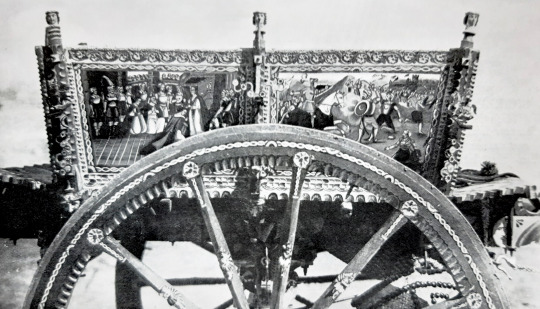
Even the wheels are delicately painted, and the spokes have little carvings on them, though these sections of the artist’s work are always fated to disappear under coatings of dust and mud after the cart has been in use for a short period. The shafts are also carved and painted, and now that I speak of them, I must say something about the trappings and harness on the horse which goes between them. Even on working days the horses, mules, or donkeys of the Sicilian carters, have something gorgeous and fantastic about their harness, even if it is only a bunch of scarlet plumes on their heads and a few circular pieces of mirror, set, like jewels, in the leather of their harness – or a piece of red ribbon tied on to one ear!
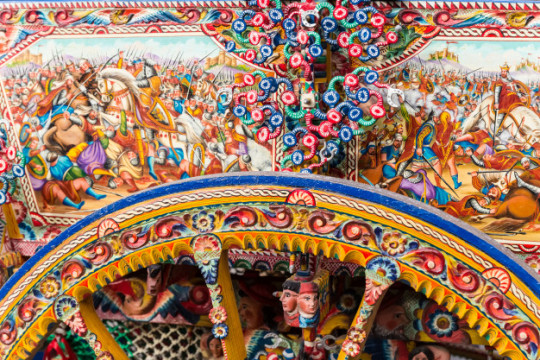
These are supposed to be charms – efficient in warding off the “evil eye” from the horses, or any other blight or illness feared by their superstitious owners. On working days the horses also wear large tassels of bright coloured wool, hanging down below their ears, and on their backs, there is a vertical section of their harness, about twelve inches high on the top of which is fixed a bunch of red feathers – their harness is also worked in wool, with brass nails and red ribbon as ornaments, and many bells are attached in various places, which make a continuous sound when the horse is in motion. The same trappings are used on mules and donkeys, and very often one sees a small donkey of mouse grey colour cantering along with his cart rattling behind him – a big tuft of red feathers on his head waving as he moves and all the bells on his harness jingling!
One feels that these are proud moments for the owner of the cart, who looks well satisfied with himself as he cracks his whip merrily in the air, and nods to his acquaintances as he passes. But these wonderful carts are not used only for industrial purposes, and on holiday occasions the Sicilian peasant takes his whole family for an airing in the cart – and even long pilgrimages are attempted in them. A number of rustic chairs are placed on the cart, forming a small square and men, women and children take their places on them, sometimes as many as eight in one small cart.
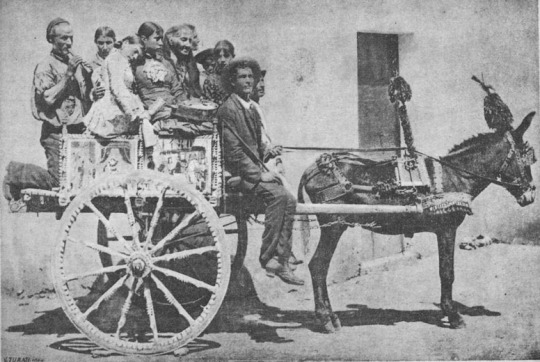
One a year, in the spring, there is a special festival for the Sicilian carts, and they come into Palermo from all parts of the neighbouring country, and parade about the streets, and prizes are awarded for the finest cart and the best caparisoned horse. It is then you see the houses in their full glory, and the carts, fresh from the hands of their makers, are wonderful to behold! Last spring, when I was in Palermo, I was present at this festival, and I will describe a cart and horse which won some of the biggest prizes.
The horse was of a light bright colour, and a fine example of the Sicilian breed, and his harness was ornate to a fantastic degree; he shone in the sunlight like the steed of some fairy prince! His harness was covered with incrustations of what seemed solid silver and had the appearance of being wrought like filigree ornaments, and it was studded with tiny pieces of mirror. When he moved the music of countless bells was heard, and his whole neck and mane was covered by what seemed armour, of wrought silver, and with a great bunch of nodding plumes on his head, he looked the visionary steed of some mediaeval warrior. Everything about him was one bewildering mass of detail, and in some parts of his harness the silver fretwork stood out several inches from his body like sculptural ornaments. There was hardly a portion of his body visible under these magnificent trappings, and he had even small leggings of silver coloured fretwork. The cart behind him was fresh from the hands of the painter, and adorned with countless enrichments of wood-carving and wrought iron.
Words cannot describe the dazzling colours in which every section of it was painted, or the wealth of incident portrayed in the pictures on it: the hands of the artist had lavished all their skill on it, and there was not the space of one inch on its whole surface that did not have some exquisite carving or painting on it. To complete the picture, I must add that the most beautiful Sicilian girl, among all the peasant women competing for the women’s beauty prize, was sitting in this cart, and great was the applause when the cart, horse and women according to the Sicilian custom – received substantial prizes for their excellence!
